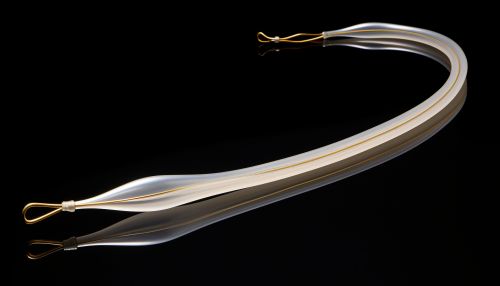Catheter
Introduction
A Catheter is a thin tube made from medical grade materials serving a broad range of functions. Catheters are medical devices that can be inserted in the body to treat diseases or perform a surgical procedure. By modifying the material or adjusting the way catheters are manufactured, it is possible to tailor catheters for cardiovascular, urological, gastrointestinal, neurovascular, and ophthalmic applications.


History
The first catheters were probably hollow reeds or tubes of rolled up leaves. The ancient Syrians made catheters from reeds. The ancient Greeks inserted catheters through the urethra into the bladder to relieve urinary obstructions. The earliest record of such a device was found in the Edwin Smith Papyrus, an ancient Egyptian medical text.
Types of Catheters
There are many different types of catheters, each with its own unique function and structure. The type of catheter used will depend on the specific medical condition of the patient.
Cardiovascular Catheters
Cardiovascular catheters are used in a variety of cardiology procedures. These include angioplasty, angiography, and valvuloplasty. There are several types of cardiovascular catheters, including diagnostic catheters, guiding catheters, and therapeutic catheters.
Urological Catheters
Urological catheters are used in procedures related to the urinary system. These include catheters for urinary drainage, for performing cystoscopy, and for delivering medications to the bladder. The most common type of urological catheter is the Foley catheter.
Gastrointestinal Catheters
Gastrointestinal catheters are used in procedures related to the digestive system. These include catheters for gastric suction, for delivering nutrients directly to the stomach, and for performing endoscopy. The most common type of gastrointestinal catheter is the nasogastric tube.
Neurovascular Catheters
Neurovascular catheters are used in procedures related to the nervous system. These include catheters for cerebral angiography, for delivering medications to the brain, and for performing neurosurgery. The most common type of neurovascular catheter is the microcatheter.
Ophthalmic Catheters
Ophthalmic catheters are used in procedures related to the eyes. These include catheters for retinal detachment surgery, for delivering medications to the eyes, and for performing ophthalmic surgery. The most common type of ophthalmic catheter is the vitrectomy catheter.
Catheter Materials
Catheters are made from a variety of materials. The choice of material depends on the required properties of the catheter, such as flexibility, durability, and biocompatibility. Common materials include silicone, latex, polyurethane, and polyethylene.
Catheter Manufacturing
The manufacturing process of catheters involves several steps. These include extrusion of the catheter tubing, molding of the catheter tip, and attachment of the catheter hub. The process may also involve coating the catheter with a lubricious material to reduce friction during insertion.
Catheter-Related Complications
While catheters are generally safe, they can sometimes lead to complications. These can include infection, thrombosis, and damage to the blood vessels or organs. To minimize these risks, it is important to use catheters correctly and to follow strict hygiene procedures.
Conclusion
Catheters are an essential tool in modern medicine, allowing doctors to perform a wide range of procedures and treatments. Despite their potential complications, their benefits far outweigh their risks, and ongoing research and development continue to improve their safety and effectiveness.
